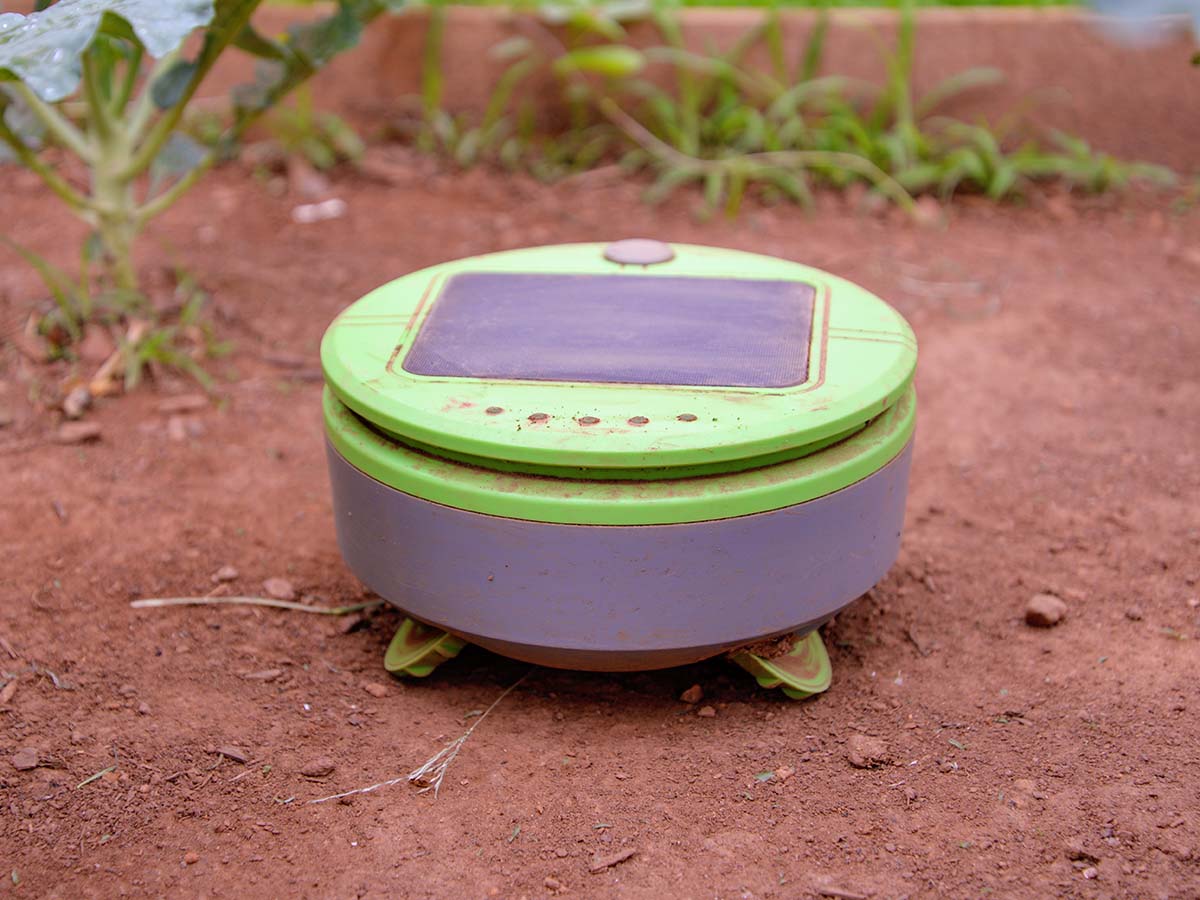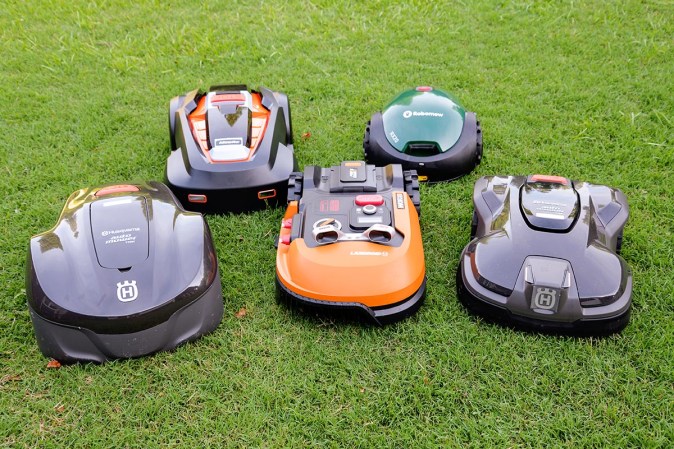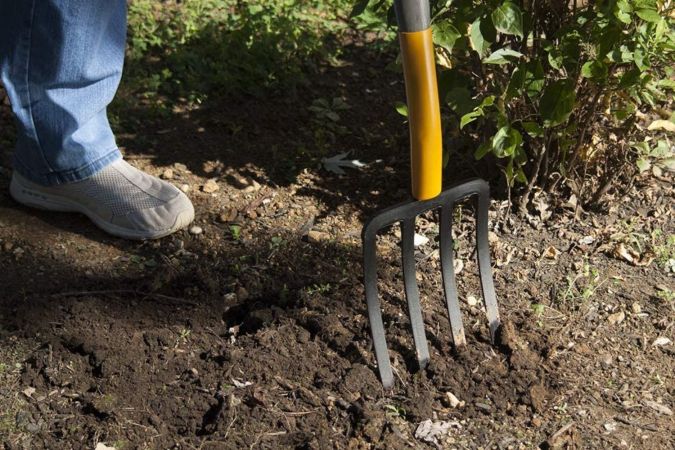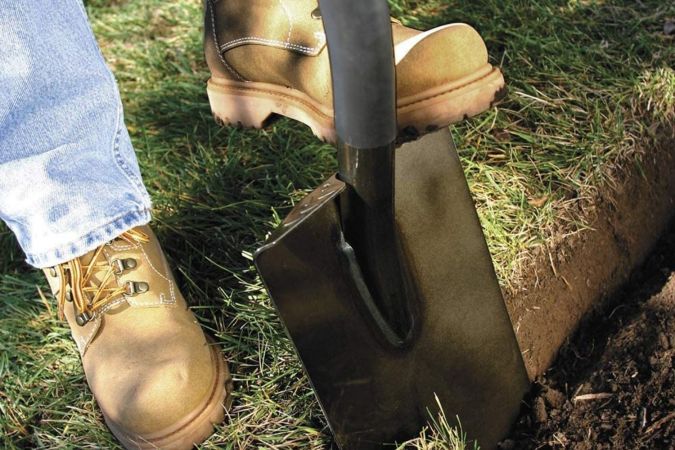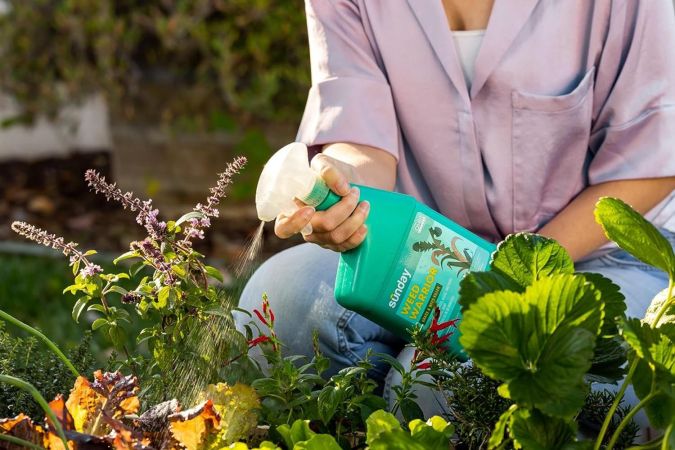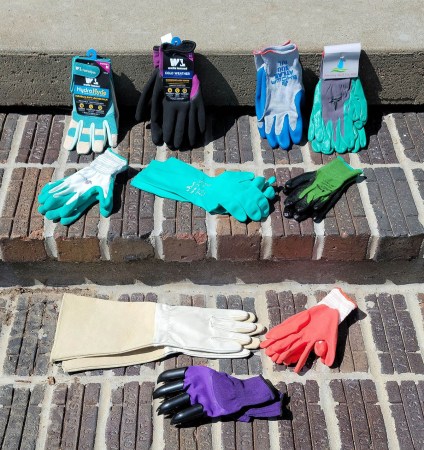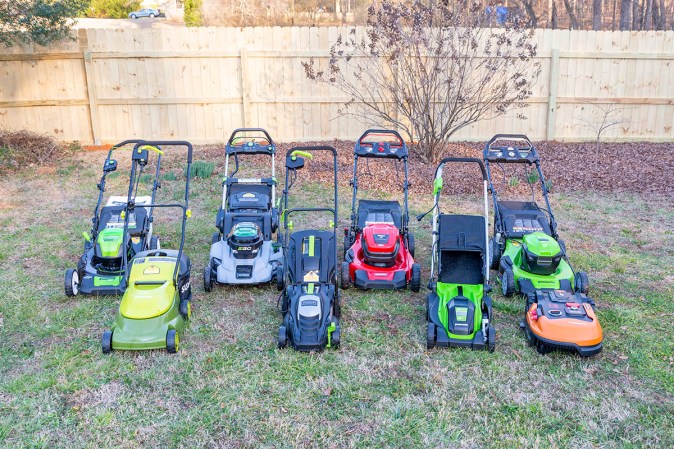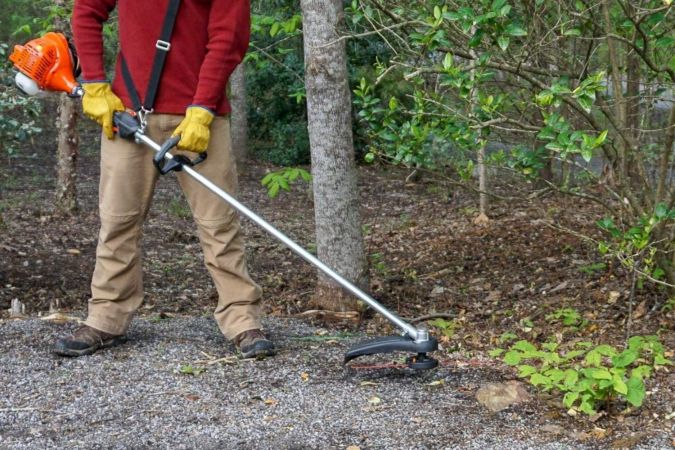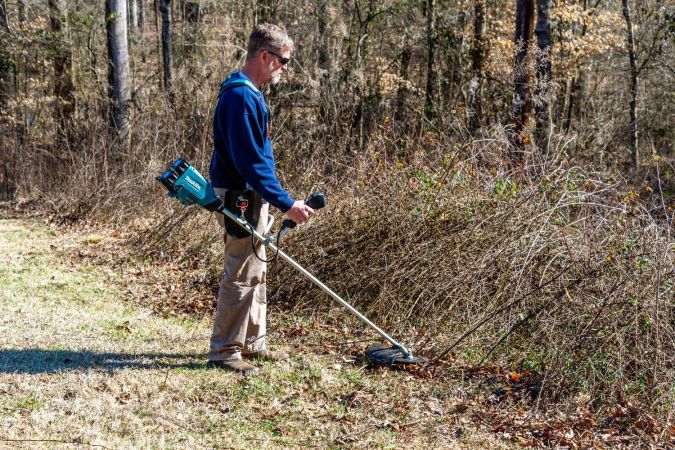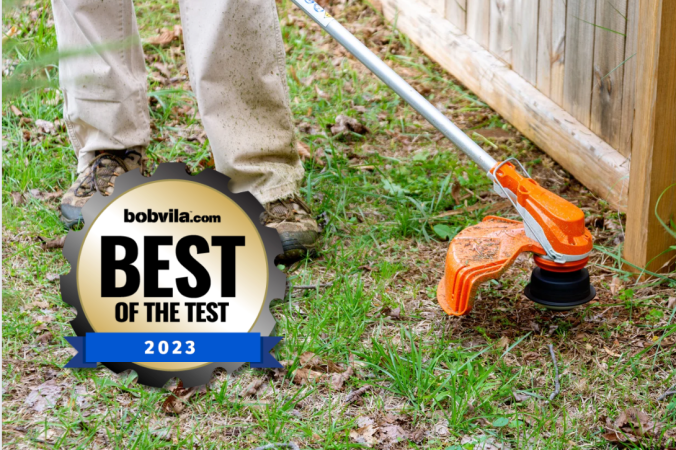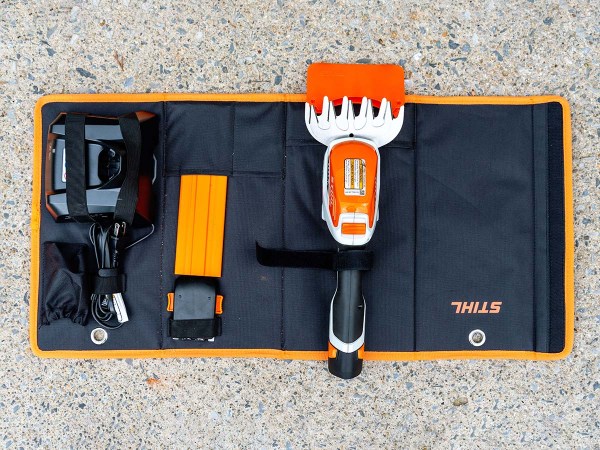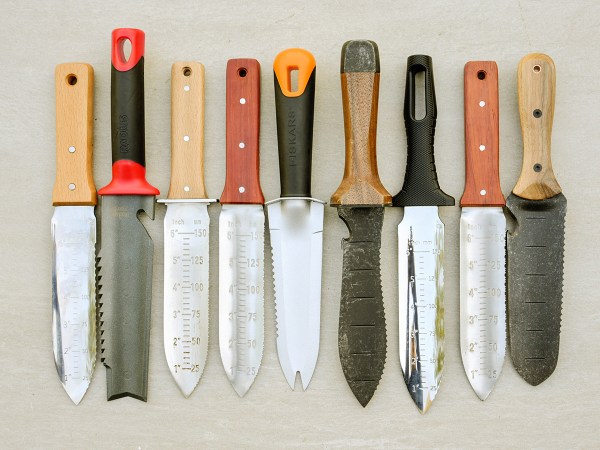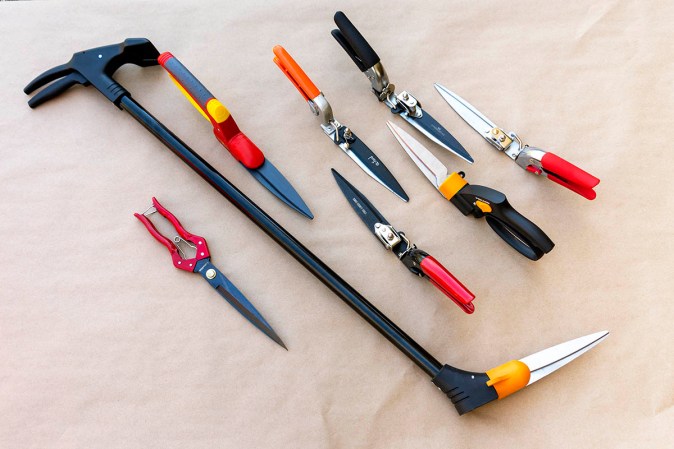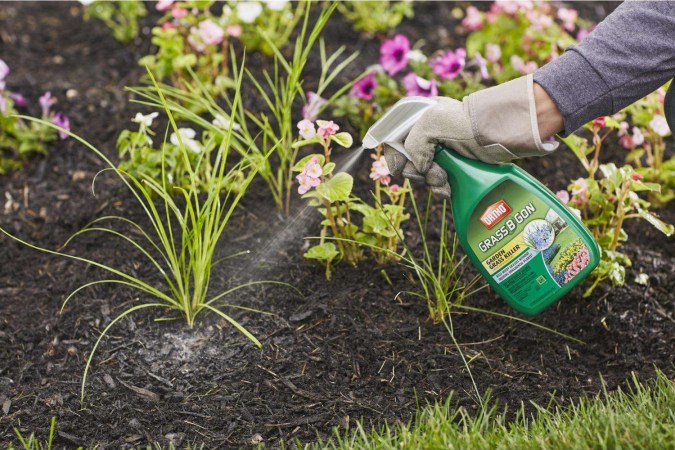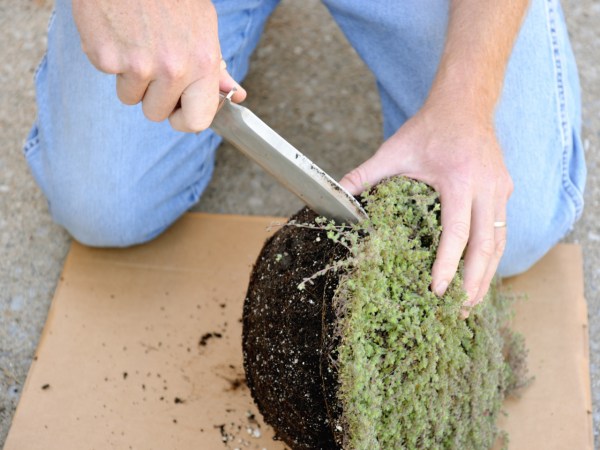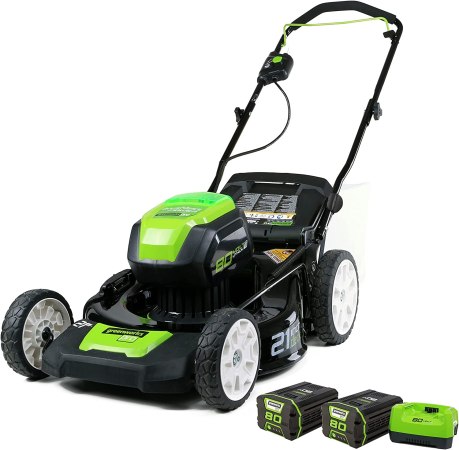We may earn revenue from the products available on this page and participate in affiliate programs. Learn More ›
Many gardeners start with vegetables. They are easy to grow and reward the grower with rapid development, attractive foliage, and of course food. However, vegetable gardening also requires maintenance throughout the season. While we may enjoy spring garden preparation and planting (not to mention reaping the rewards of the veggie patch), routine chores like weeding lie somewhere between mundane and torturous in the midsummer heat. As a dedicated gardener who tests and writes about tools, I love it when I get to try new things that could make gardening easier and more accessible. The Tertill Weeding Robot is exactly that kind of thing.
Tertill (pronounced “turtle”) is the first robotic weeder for home gardeners. It is designed to autonomously maintain up to 200 square feet of garden space with minimal maintenance, eliminating nearly all hoeing, hand weeding, and herbicide applications. Sunlight powers the robot, and weatherproof construction allows it to remain in the garden throughout the growing season.
I tested the Tertill Weeding Robot in my own garden from the beginning of August through the end of September, just in time for a late summer planting of fall veggies. Starting with a weed-free garden bed, I installed a border of 1×6 cedar fence boards to keep the robot in the garden. Then I planted a dozen broccoli seedlings 18 inches apart, leaving 12 inches between the outermost plants and the border. After giving everything a good watering, I placed the Tertill in the garden and let it go to work. As a point of comparison, I planted a second bed that was identical to the first, where I allowed the weeds to grow unchecked.
The Tertill performed extremely well in my small trial garden, even as we received more rain than usual. After one quick and easy software update—downloaded from the Tertill mobile app via Bluetooth connection—the robot simply worked. It did not allow a single weed to grow up, and it only left a narrow band (less than 1 inch wide) of tiny weed sprouts along the bed border and against the seedling stems. At the same time, the comparison bed grew a crop of weeds more than 14 inches high. Read on to learn more about how the Tertill Weeding Robot works, and find out where it may not be as well suited.
Tertill Weeding Robot: At a Glance
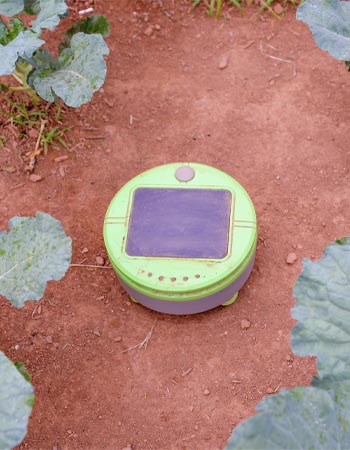
Rating: 8.6/10
PROS
- Easy to set up and control
- Works independently without programming
- Weeds up to 200 square feet (maybe more)
- Needs no outside power supply
CONS
- Not programmable
- Requires a garden border
- Less effective during extended cloud cover
Get the Tertill Weeding Robot at:
What is the Tertill Weeding Robot?
The Tertill is a disc-shaped autonomous device designed to stay in the garden from spring through fall. This robot features a 4.3- by 5.3-inch solar panel on the upper surface, four motorized wheels and a string-trimmer blade on the underside, and weatherproof housing. It measures just over 8 inches in diameter, 4.5 inches high, and weighs just 2.5 pounds. A single button on top controls the device, while a 5-LED array and chime sound effects indicate operational modes.
How easy is the Tertill Weeding Robot to install?
This weeding robot was extremely easy to install, but the preparation was key. The garden must be surrounded by a 4-inch-high barrier with no gaps. Wood, stone, brick, wire fence, and plastic all work just fine. The robot uses this barrier, instead of a perimeter wire or GPS system, to stay within the designated garden area. Plant spacing is also critical so that the Tertill has space to maneuver: It’s important to space plants 12 inches apart and leave 12 inches between the barrier and plants.
My garden bed was previously prepared and planted, so I simply inserted the protective wire barriers (included with the Tertill) around each seedling, placed the robot in the garden bed, and turned it on. It started working immediately.
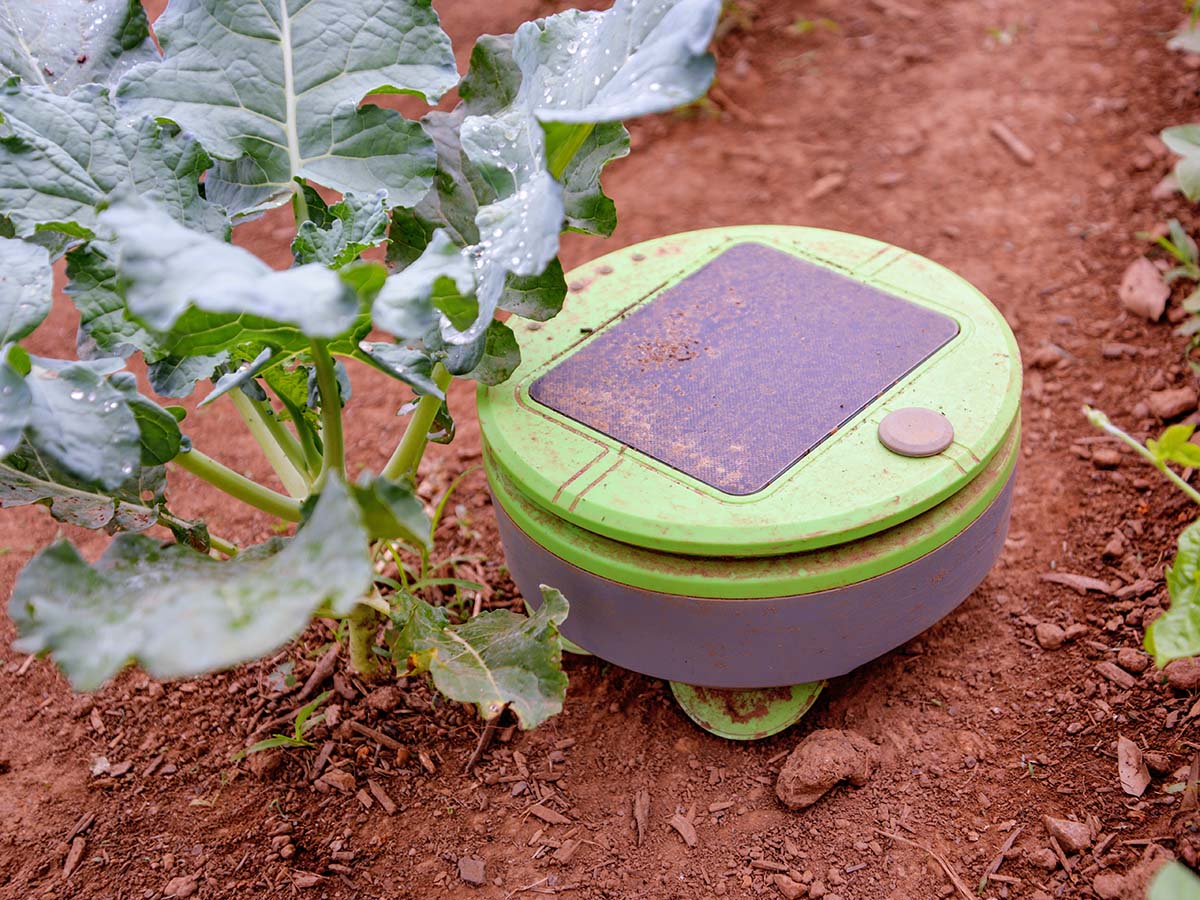
Is the Tertill Weeding Robot easy to use?
The Tertill is very easy to use. Like a robot mower or robotic vacuum cleaner, the Tertill uses a variety of sensors to find its way around the garden in a random pattern. The machine travels in a straight line until it encounters an obstacle that forces it to change direction. The uniquely slanted wheels propel the machine and stir up the soil as it moves. A replaceable string-trimmer line on the underside of the unit performs the actual work of eliminating weeds. The short trimmer line lasts about a month, and it only takes a few seconds to replace.
Instead of being tethered to a charging station, the Tertill captures solar energy to charge its lithium-ion battery. For optimal battery longevity, it operates between 70 and 85 percent charge. The weeder works for 2 to 5 minutes at a time, then rests in place to recharge. While recharging, it assesses its battery level every 20 minutes, then it begins trimming again when the charge is adequate. This operating cycle continues from sunup to sundown. The total running time for a full day averages about 2 hours, which is adequate for about 200 square feet of garden space.
Is the Tertill Weeding Robot worth the money?
At $349, the Tertill robot is priced comparably to entry-level robot mowers and robot vacuums. That seems about right for the technology, as it operates similarly to their bump-and-go navigation. This relatively simple device does not offer much in the way of remote access or custom programming, so the lack of those features helps to keep the cost down.
Another way to consider the value of a tool is by calculating labor savings. How many hours of hand weeding would cost $349? At $15 per hour, we’ll round it to 23.25 hours. I spend about 10 minutes hoeing and pulling weeds in a 200-square-foot bed twice a week. Twenty minutes per week multiplied by 52 weeks equals 1,040 minutes, or 17.33 hours per year. For those of us in mild climates who garden year-round, the Tertill pays for itself in about a year and a half. Half-year gardeners would reap the payoff in three gardening seasons.
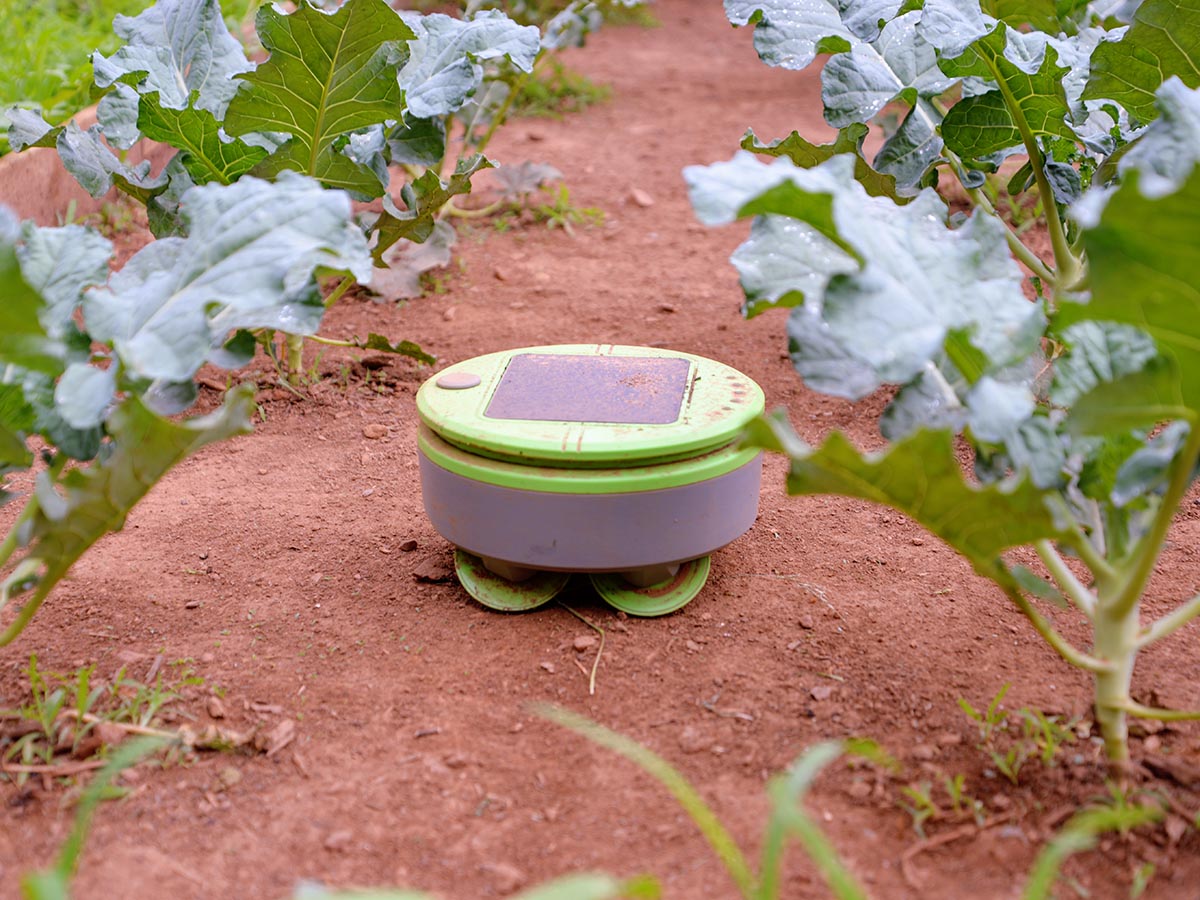
Should you buy the Tertill Weeding Robot?
Do not buy the Tertill for container gardens, flower beds, or other garden spaces without ample room to maneuver. Gardeners should also beware that the Tertill is not secured by a PIN or other theft deterrent, so it should only be used in secure gardens. It’s a fun device with lots of potential, but it does have limitations.
On the other hand, if you’re looking to save time and labor on a not-so-fun garden chore, or if you want to give a uniquely helpful garden gift, the Tertill Weeding Robot could be a great choice. The fact that I can forget about it for a week or two at a time speaks volumes. I have not hoed or pulled a weed in the test bed since I installed the Tertill, and it has fewer weeds than other beds I have consistently been working in. My next test will be to learn what happens when I rotate the Tertill among multiple beds on intervals of 1, 2, or 3 days. I believe the robot will be capable of maintaining more square footage with only a minimal amount of management.
Where to Buy the Tertill Weeding Robot
Get the Tertill Weeding Robot at:
Meet the Tester
Mark Wolfe is a writer and product tester with a background in the nursery and landscaping industry. For more than 20 years he mowed, edged, planted, pruned, cultivated, irrigated, and renovated beautiful landscapes. Now he tests and writes reviews about the latest outdoor power equipment, hand tools, lawn-care products, and other outdoor-living goods.

